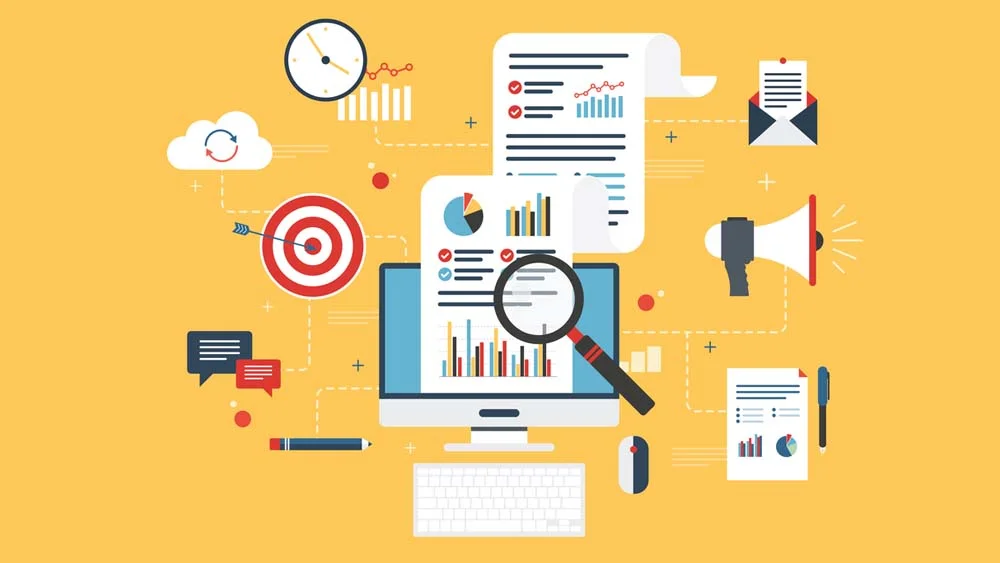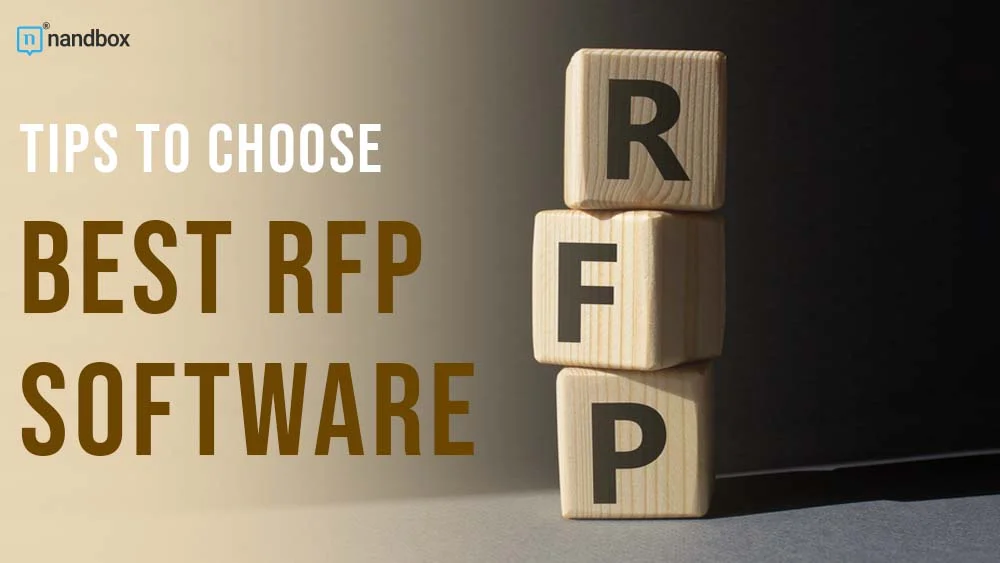The choice of RFP software is fundamental to the efficiency of procurement in any organization at any given time. Given the existence of multiple solutions for businesses, and with more appearing on the market, the process of selecting the most suitable solution to the given problem can be quite a daunting task. In this blog post, there are guidelines to help organizations avoid errors and make the process of choosing RFP software smoother.
Current RFP Workflow Analysis

It is vital to have deep insights into how you currently manage RFPs. Beginning with the buyer’s need recognition that filters through to vendor identification and contract negotiation, before embarking on assessing RFP software solutions. Engage available internal stakeholders to understand their needs, create a flowchart of the RFP process, assess the barriers and issues, and evaluate the number/types of requests to identify your needs. This will help you determine what your current and future state of workflow is. It will also provide a starting point for raising the bar on your RFP software choices.
Evaluate Current Capabilities and Plan for the Future
It is pertinent here to state your goals and objectives clearly to understand what you expect to gain after integrating RFP software. This entails establishing specific targets linked to your overall direction. Are your goals, for example, to decrease turnaround time? Is it to have a consistent process, to do away with paperwork, and to enhance collaboration? Or to enhance visibility? In other words, decide what success for you as an individual would be. This will give you a checklist of sorts by which you can measure how well a specific software solution can accomplish your objectives and, in turn, assign a rank. Many organizations also look into the best purchasing software to complement their RFP systems and streamline the entire procurement workflow. It is also advisable to monitor the results periodically, especially with the pre-implemented goals for the best impact.
Capabilities and features
Equipped with the goals and requirements baseline, you can proceed to the product analysis stage. The evaluation and comparison of capabilities and the application’s features of leading products against the background of how they meet these requirements. Some of the capabilities that need to be evaluated are the tools used in the creation of an RFP. Its management, the ability to collaborate with stakeholders, communication means, tools used for response analysis, and compatibility with other systems. As well as mobile features, analytic capabilities, and the possibility to customize the system. The idea is to find out which RFP software is most suitable for your current and expected needs along the above-mentioned dimensions.
Define and Select Pricing and Licensing Models
Go deeper into costs and build a business case. Also, quantify the return on investment (ROI) of better visibility, greater efficiency, lower risk, and shorter procurement cycles. Usually, the cost structure of RFP software solutions depends on the number of user licenses. It also depends on the number of proposals being managed, the level of support expected, the extent of customization, and the features and options being used. Select a model with clarity in terms of costs and attempt to get one that is linked to your growth as a model. Be wary of the cheapest option rather than keeping your eyes on the whole life cycle cost and how they tie in with your goals. There will be no point in implementing all the features and capabilities if people do not use them. Thus, key stakeholder adoption is crucial.
Conduct Proof of Concept and Seek Recommendations
In addition to the basic approaches used to build product awareness and deliver concept demonstrations. You can go deeper by asking for more in-depth, customized platform overviews or live demonstrations of key concepts. The following steps should be taken: load a set of sample data to the RFP solution that is most relevant to your business and allows key users and stakeholders to work with the system. Identify whether or not the system achieves your expected results for the main features. For instance, usability, speed, flexibility, compatibility, etc. Additionally, make an effort to obtain recommendations from current customers in your connection or business network as well as from people in the wider industry. This is to learn about the actual strengths, weaknesses, and gaps in the data that the vendors provide.
Cross-Functional Priority
Assess the frequency and effectiveness of training and development—a key factor for continued usage and effective RFP management. This means that with complex applications, you end up with unutilized functions, estranged key stakeholders, and inefficient processes. This is if your team is incapable of capitalizing on its benefits. Check the availability of such broad resources as tutorials, advisors, training manuals, contextual assistance, etc. Whether or not the vendor can deliver role-specific training, role-specific RFP approaches, and similar solutions for maximum value achievement. While interrupting business processes as little as possible. It is used to embrace even the most advanced RPF platforms and establish user experience as the ultimate driving force.
Implement Change Management Collaboration
Finally, do not dismiss the organizational change management needed to migrate from traditional. For instance, possibly outdated manual RFP processes or tools that are not part of today’s advanced automated systems. Engage the change leadership early, orient for the specific role, cross-sell or facilitate cross-selling, foster communication, and feedback, and communicate the benefits and early success stories to the employees who are required to use the change. Document your evaluation approach, the views of your stakeholders, and the choice criteria in a thorough decision-documenting report. This is for the transparency of trade-offs and a basis for assessing subsequent improvements or new and different solutions. Revisit and improve the current and upcoming releases based on the feedback of stakeholders and benchmarking.
Conclusion
Choosing the best RFP software with the help of free demos and other selection criteria aligned with your needs and change preparedness is undoubtedly a challenge that involves people, process, and technology factors. Having reviewed the 8 practical strategies that you can apply in decision-making to optimize procurement software agility and support data-driven decision-making and collaboration, along with the potential for achieving greater ROI on an RFP automation tool, you can now proceed with your procurement decision-making confidently.




